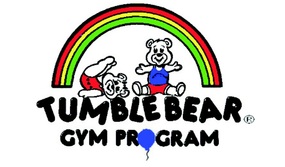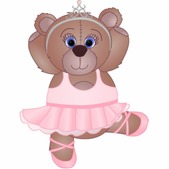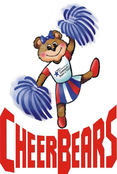PRESCHOOL
We offer 3 programs for our preschoolers: TumbleBears, Dancing Gym Bears and CheerBears.
THE BENEFITS OF OUR PRESCHOOL PROGRAMS
Top 10 Benefits
1. An increase in muscular strength, flexibility, and endurance.
2. The knowledge of how to fall and roll safely for all sports.
3. Increased agility, coordination, and fundamentals of movement.
4. Discipline and self-control.
5. Learn to listen as well as follow rules and directions.
6. Social interaction with peers.
7. A confident self-image and a positive attitude towards their bodies.
8. Gain self-esteem and a "can do" attitude.
9. Learn to set goals.
10. Trust in one's own abilities: move from a world of "I can't" to "I can"
BONUS: IT'S FUN!
1. An increase in muscular strength, flexibility, and endurance.
2. The knowledge of how to fall and roll safely for all sports.
3. Increased agility, coordination, and fundamentals of movement.
4. Discipline and self-control.
5. Learn to listen as well as follow rules and directions.
6. Social interaction with peers.
7. A confident self-image and a positive attitude towards their bodies.
8. Gain self-esteem and a "can do" attitude.
9. Learn to set goals.
10. Trust in one's own abilities: move from a world of "I can't" to "I can"
BONUS: IT'S FUN!
These programs were created to promote the development of reading readiness, gross fine motor skills and fine motor skills. Here are some examples of how we incorporate these ideas:
Visual differentiation : Seeing and feeling the different size of bars and how far to swing to dismount.
Laterality : Moving sideways down a beam.
Directionality : Understanding left and right when learning a handstand and cartwheel.
Hand-Eye coordination : Throwing a hoop over a cone.
Distance, size, and shape in space : How far to roll to stay on the mat and land correctly.
Small muscle coordination : Pointing toes during a skill or passing a beanbag to a partner.
Large muscle coordination : Learning gymnastics skills.
Word and letter discrimination : We label certain items in the gym and use letters as props.
Sensory discrimination : Squeezing the bar with the right grip to spin around the bar.
Auditory factors : Listening to the teacher.
Awareness, perception, and memory : Listening and understand the teacher.
Expressive language : Explaining to family members after class what they did.
Attention spans : Ability to stay at a station and work on one skill.
Imitating : Watching the instructor or other children do the skills and repeating it.
USE THESE WORDS AND TECHNIQUES AT HOME AND ENCOURAGE LOTS OF EXERCISE WITH YOUR KIDS!
Visual differentiation : Seeing and feeling the different size of bars and how far to swing to dismount.
Laterality : Moving sideways down a beam.
Directionality : Understanding left and right when learning a handstand and cartwheel.
Hand-Eye coordination : Throwing a hoop over a cone.
Distance, size, and shape in space : How far to roll to stay on the mat and land correctly.
Small muscle coordination : Pointing toes during a skill or passing a beanbag to a partner.
Large muscle coordination : Learning gymnastics skills.
Word and letter discrimination : We label certain items in the gym and use letters as props.
Sensory discrimination : Squeezing the bar with the right grip to spin around the bar.
Auditory factors : Listening to the teacher.
Awareness, perception, and memory : Listening and understand the teacher.
Expressive language : Explaining to family members after class what they did.
Attention spans : Ability to stay at a station and work on one skill.
Imitating : Watching the instructor or other children do the skills and repeating it.
USE THESE WORDS AND TECHNIQUES AT HOME AND ENCOURAGE LOTS OF EXERCISE WITH YOUR KIDS!




